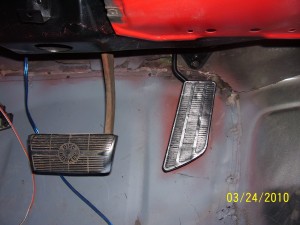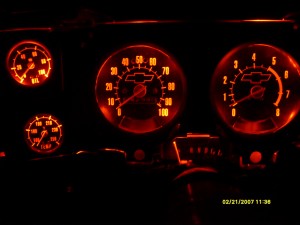The Clunky ION Is Repaired
So yeah. Took the clunky ION back to the shop since I was now sure after my tests and research that it was the lower control arm bushings. They are morons, and even after I told them what was wrong they still thought it was something else. They allowed me to go back to the lift where I showed them with a screwdriver the same thing I did in my earlier video. They said “Oh we hadn’t made it back that far.”
It’s 12 inches away. In fact, they would have HAD to have removed the ball joint to replace the strut and it is attached to the stinking control arm.
But don’t worry! They offered to fix it for free. Oh no wait! – that would have made SENSE! No, in reality they wanted me to pay an ADDITIONAL $300 to fix the bushings. And they would be replacing them with OEM. So I said I’d think about it, which really means “I’ll be egging your house later, thanks.”
I ordered the Prothane bushings carried by Never Enough auto – and they are the BOMB and you should totally get some if you have an ION and have this problem. The instructions are pretty good, though they gloss over some bits I wish they had elaborated on. essentially the process is to remove the control arm, remove the old bushing (or in my case “Let the old bushing which is no longer attached in any way shape or form to the control arm fall merrily to the floor”), cut out the old sleeve, clean everything, grease up the new bushing, and press it in.
So the parts I thought would be really hard weren’t. But some parts I had not even given any thought to were about like trying to do rectal surgery on one’s self. I just removed the bolts from the control arm to the subframe, the big bolt through the lower bushing, and the ball joint pinch bolt and the whole arm came out pretty easily. Basically the old lower control arm bushing just fell out. So I didn’t have to press that out. And I also didn’t end up doing the front bushings because they didn’t really need it, and also I couldn’t understand how to get the mounting bracket out of the old bushing. Pressing the new ones in was somewhat fiddly – especially with no actual press (if you are going to do this – pay the money for an actual tool or at least the $50 for a harbor freight arbor press. ) Also, you really HAVE to install them from the top side of the arm or they will just never go in, because the top side is nice and beveled an the bottom side is sharp. But it wasn’t really difficult. No, the hard part was yet to come…
The fun began when I tried to get the arm back in. The clearance for the metal sleeve within the lower control arm bushing is exactly the same width as the opening into which you slide the lower control arm section. So there is no room for error. and that would be no problem at all – if you could slide it in directly from the side or end. but you can’t. Because the balljoint end of the control arm is hitting the wheel mount. And short of REMOVING the wheel mount, there isn’t a whole lot you can do about it. But I wasn’t about to do that, so I went with the “Yam It In” method. It is a GM certified technique. It didn’t work. All it did was cut into the lower side of the bushing. I finally ended up having to wedge the top portion of the bushing in, and the use the floor jack to apply pressure to the bottom bit of the bushing that was sticking out to kind of compress things a little. Then it slide on it, but it wasn’t easy. (on the other side, I figured out you can bend a thin piece of sheetmetal on the top and bottom edges of the opening and grease them up to help it slide in without cutting into the bushing)
I thought my pain was over, but I was wrong. The lower control arm bushing bolt had to be reinserted. But the sleeve in the bushing was at an angle to the holes the bolt goes through, so it wouldn’t line up. If I got in the bolt at the bottom, it just jutted out at an angle – it was nowhere near the top hole. If I tried to torque things to line the TOP hole up, the bottom hole bit into the bolt threads and got stuck. So I had to sit there with a screwdriver shifting things around for like an hour (really) before it would finally line up. The other side was worse for some reason.
But, five hours after I started, it was done. And now there is NO CLUNK! So I’m happy. Tomorrow I’m taking it into to a DIFFERENT shop to get the squeaky coils fixed. I’ll have them do an alignment while I’m there.

